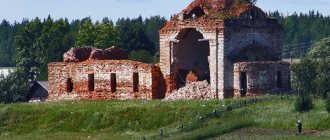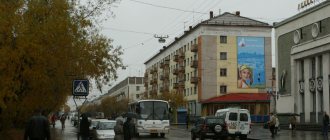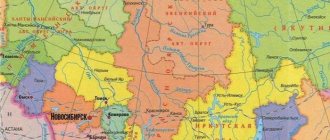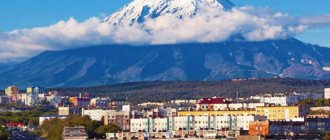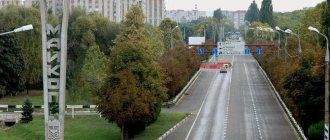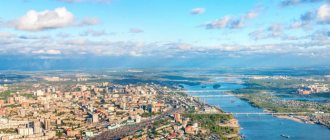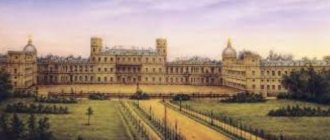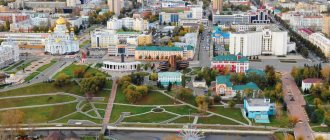What holiday is it today?
January 22, 2022, Saturday
Today are holidays, events: Day of Unification of Ukraine Tomorrow: Premiere of the opera “Eugene Onegin” at the Bolshoi Theater
Today is the Orthodox holiday: Martyr Polyeuctus. St. Philip, Metropolitan of Moscow and All Russia, wonderworker... Tomorrow: St. Gregory, Bishop of Nyssa. Venerable Markian the presbyter. Venerable Dometian, Bishop of Melitino. St. Paul of Komel, wonderworker, student of St. Sergius of Radonezh. Saint Theophan, the Recluse of Vyshensky...
Today is a national holiday: St. Philip's Day... Tomorrow: Gregory - Summer Guide...
Seasons
Seasons, four periods of the year (spring, summer, autumn and winter) characterized by certain average temperatures. The period during which the Sun passes through one of these sectors is called the season. Spring in the Northern Hemisphere and autumn in the Southern Hemisphere begin when the Sun passes through the initial circle of declination and its right ascension is 0° (vernal equinox). Summer in the Northern Hemisphere and winter in the Southern Hemisphere occur when the sun's right ascension is 90° (summer solstice). Autumn in the Northern Hemisphere and spring in the Southern Hemisphere begin when the sun's right ascension is 180° (autumnal equinox). The beginning of winter in the Northern Hemisphere and summer in the Southern Hemisphere is considered to be the winter solstice, when the direct ascension of the Sun is 270°... Next: Seasons. Russian folk calendar. Monthly words...
Housing
Previously, a common type of Komi housing was above-ground construction. The houses were made of pine logs. Each house had a stable, a courtyard, and also a story, which was connected by a platform. The roof of the house has always been pitched. Usually the Komi built two huts (winter and summer). The roof was common for them, and the second slope was intended to cover the yard. In the south, one-story houses were built, and in the northern regions, two-story houses were common. Inside the huts there was a stove, next to which there was always a red corner. Eastern Komi people placed a small window above the stove. Until the second half of the 19th century, Komi were drowned in black. Many Komi people built barns, called zhanniks, cellars, and bathhouses. Sometimes you can see wells near traditional houses. Often baths are built next to the river. The home is decorated simply, but tastefully. To do this, they use fabrics decorated with ornaments, and beautiful patterns are cut out on window shutters. As decorative items, in almost every home you can find hand-carved wooden figurines of birds and horses. For reindeer herders, deer antlers are a mandatory decoration.
Folk calendar about every day
Every day one season always replaces another and this determines a person’s way of life. In connection with this, a folk calendar was formed in which there were practically no nameless, unmarked days. Every day was special, had its own purpose. All this was determined by climate conditions and astrological phenomena.
A calendar is a system for counting periods of time. The first calendars arose a long time ago, in ancient times, because there was a need to measure time. The word calendar comes from the Latin words caleo - to proclaim and calendarium - debt book. This is due to the fact that in Ancient Rome the beginning of each month was especially proclaimed, and because it was customary to pay debts on the first day of the month. Different peoples counted time differently. Some calendars are based on the changing phases of the moon - lunar calendars; in others - the change of seasons - sunny; in others, the length of the year was coordinated with the change of seasons, and the counting of months was associated with the phases of the Moon. Such calendars are called lunisolar.
In Rus', the calendar was called a monthly calendar. Every day, the month book covered the entire year of peasant life, “describing” day by day, month after month, where each day had its own holidays or weekdays, customs and superstitions, traditions and rituals, natural signs and phenomena. The cyclical nature of the calendar is reminiscent of human life, where spring is youth, summer is heyday, autumn is the time of harvesting fruits (it’s good if there are some, otherwise you can live your life without collecting fruits), winter is the time of wisdom and peace. This cyclicality and rhythm determined the way of life of the farmer. The folk calendar was an agricultural calendar, which was reflected in the names of the months, folk signs, rituals and customs. Even the determination of the timing and duration of the seasons is associated with real climatic conditions. Hence the discrepancy between the names of the months in different areas... Next: Folk calendar...
Traditions
Komi traditions have touched many aspects of life. Despite the spread of Christianity, ancient holidays are still celebrated. For example, a harvest festival, seeing off the disappearing ice, the beginning of a hunt. The traditions of the people were associated with cults that worshiped fire, forest, and craft. The cult of ancestors who protect the home is always held in high esteem. Among the Komi you can still find magicians and shamans who know conspiracies and master witchcraft.
Holidays
Holidays associated with traditional activities have become popular among the Komi people. For example, people celebrate fisherman's day, reindeer herder's day, culinary arts day dedicated to fish pie and other dishes. The largest holiday in the republic is considered “Lud”, which is celebrated in the Izhevsk region. It is customary to organize theatrical performances. The holiday includes folk festivities, jumping over a fire, and the singing of folk songs. Everywhere you can see lead singers improvising to the accordion playing.
Fishing calendar for every day
The fishing calendar should not be taken as an absolutely indisputable truth. Fish biting is greatly influenced by a whole range of natural factors, as well as the influence on the nature of man himself. You must not forget that the fish’s bite depends and is determined not only by the calendar dates and biological cycles of their life, reflected in the calendar, but also, no less, by the state of their habitat; the bite also depends on weather conditions: air and water temperatures, cloudiness, wind direction and strength, etc... Next: Fishing calendar...
Ethnographic composition of the population
The number of Russians in the Republic has increased tenfold compared to 1926. Then the percentage of residents who considered themselves Russian was 6.62. Now this figure has increased to 65%.
The population of the Komi Republic is 23% represented by the indigenous ethnic group - the Komi-Zyryans. For comparison, in 1926 there was an overwhelming majority - 92%. In rural areas, this nationality is represented more than in cities. Zyryans live, in addition to the Komi Republic, also in Murmansk, Kirov, Arkhangelsk, Omsk and other regions. 1,500 residents of this ethnic group also live in Ukraine.
Other ethnic groups living in the Komi Republic: Ukrainians, Tatars, Belarusians, Germans. By the way, the size of the German population has almost halved over the past few years - from 9246 to 5441 people.
Orthodox calendar about every day
Orthodox calendar: Orthodox, Church and Christian holidays.
The church year is an alternation of weekdays and holidays. On weekdays, a person is called to work “by the sweat of his brow to earn his bread.” Holidays are given in order to feel liberation, to rise above the bustle and routine of the world, to feel involved in the highest of worlds, “where there are no illnesses, sorrows and sighs, but endless life.” Since ancient times, holiday cycles have been associated with the seasons. The pagans associated them with the worship of the forces of nature, the cult of which in the Old Testament was replaced by gratitude to the Creator for the universe. And although the connection between holidays and the seasons has not completely lost its power, since God is present in everything, in the plant and animal world, in human works, it nevertheless faded into the background, giving way to a spiritual foundation built on the Sacred Scriptures. The history of Orthodox holidays dates back to the times of the Old Testament. Each of the Orthodox holidays is dedicated to the remembrance of the most important events in the life of Jesus Christ and the Mother of God, as well as the memory of saints... Next: Orthodox calendar...
Language
Komi is the official language of the republic. Most of the population also speaks Russian. The vernacular language is taught in all schools. There are approximately 10 dialects, each of which is confined to a specific region. The development of language made it possible to create writing. The Komi used unique runic signs - passes. With the arrival of Stephen of Perm, writing begins to undergo changes, which is clearly visible in the “Zyryan Trinity” - an icon that has survived to this day since the 14th century. The Komi used their own alphabet (anbur, or abur) until the 17th century, then there was a transition to the Cyrillic base.
Russian folk calendar for every day
The word “sign” comes from the word “notice”, i.e. observe. As a result of observing what happens around a person every day, he accumulates life experience. This knowledge was passed down from generation to generation, carefully preserved and people trusted it as a sacred book. Many signs have come to us from the depths of centuries without losing their knowledge. Each of us is free to choose: to dismiss all this as an absurd superstition or to take a closer look at the signs and take the centuries-old experience of generations more seriously. Most of us, when taking exams, ask them to scold them, boasting about some kind of good fortune or luck, spit so as not to jinx them or knock on wood, take a detour if a black cat crossed the road, are afraid of the number 13 and much more. And who among us does not have lucky things, numbers? Who has never resorted to the help of fate at least once in their life, who has not believed in secrets? It’s as if everything connected with signs is hidden somewhere deep in our subconscious. Often we remember them mechanically, unconsciously, or just as a joke. But, undoubtedly, the signs contain a lot of accurate knowledge and practical wisdom of our ancestors. They cover all the characteristic, often difficult to perceive, natural phenomena. Signs have preserved a lot of what was in old folk holidays and customs; they help predict the weather, grow crops... Next: Folk signs...
Culture
Komi culture is rich in folklore, including myths, fairy tales, and legends. The people actively developed creativity, which clearly reflects applied art. Much attention was paid to ritual poetry, the central theme of which is the family. People often dedicated songs to everyday work, especially emphasizing the difficult life of a farmer and a person who devotes himself to farming. Proverbs and sayings are dedicated to moral standards; they clearly convey moral teachings to parents and every citizen. One can see an interesting feature in all of Komi’s creativity. In almost every work, be it musical or literary, positive notes slip through. The Komi have always believed in a bright future, reminding their descendants that they must always work, no matter what happens. The Komi consider the period of youth, which they call the sun-faced life, to be the most valuable in the life of every person. The development of patterned knitting led to the creation of a unique ornament, characteristic only of the Komi people. The people managed to master the creation of fur mosaics, wood and bone carving. Ornaments can be seen on household items, clothing, and weapons. Mostly the ornament has geometric shapes; sometimes scenes are shown in which animals and people are participants.
Holiday calendar, dates and events of the year
All state and professional holidays in Russia, including significant World and International holidays, and other equally interesting holidays and events about every day.
The holiday has always kept pace with the history of mankind. Social time can be divided into three types: everyday life (weekdays), weekends and holidays. Everyday life is a series of practices repeated day after day and every day (work). Weekends are regular breaks from the rush of everyday life. It is believed that on weekends a person should restore his strength after working days. Day off, non-working day. A holiday is a day of celebration established in honor or in memory of someone or something. A day or series of days celebrated by the church in memory of a religious event or saint... Next: Calendar...
Food
Komi people are characterized by abundant nutrition. People use meat, fish and plant products for food. Usually there are 3 meals every day. On a weekday, 3 liquid dishes can be served during lunch and dinner. At the holiday, the number of dishes could range from 15 to 25.
- The first course is traditionally served with soups, which can be cabbage soup or stews.
- For the second course they eat porridge - it can be pearl barley or barley.
- In addition to the porridge, fish (boiled, fried, salted or dried) is served. Fish pie is prepared for the holiday.
- Soup with meat can also play the role of a second course. Komi meat is rarely consumed in its pure form. The exception is reindeer herders and hunters, for whom such food is traditional.
- Along with the dishes, baked goods are consumed: pancakes, bread, pies.
- Be sure to have a variety of vegetables on the table.
- Drinks include berry decoctions, tea, kvass, and birch sap. Beer on holidays.
Prayer book, Orthodox prayers for every day
Prayer is the most powerful means for healing all illnesses - both physical and mental. Prayers can be laudatory or grateful, petitionary and repentant. If we have offended God, sinned, we must ask Him for forgiveness, that is, repent. Such prayers are called repentant prayers. If everything is fine with us, if we and our loved ones are healthy and prosperous, if we have a place to live, something to wear, something to eat, we must glorify and thank God for this. Such prayers are called praise or thanksgiving. If some misfortune, illness, trouble or need happens, you need to ask God for help. Such prayers are called petitionary... Next: Orthodox prayers...
Zodiac, astrological, eastern calendar. Zodiac signs
In ancient times, to establish the calendar, priests used knowledge of the positions of all the planets. Before the reform of Peter 1, the New Year was celebrated on the Day of the Autumn Equinox. On this day, according to ancient legend, the most peaceful treaty was concluded between the Great Race (ancient Slavs) and the Great Dragon (ancient Chinese) and it was approximately 7518 years ago... For the ancient Slavs, the calendar month corresponded to the lunar cycle from new moon to new moon, taking into account such Thus, the relationship of the entire annual cycle with astronomical and natural phenomena. There was no coherent calendar system. The main natural phenomena are still considered to this day to be the days of the solar equinox and solstice - the Slavic holidays Maslenitsa, Kupala, Ovsen and Kolyada. But during the time of Peter 1, all ancient Slavic calendars were abolished and a new Western European calendar from the Nativity of Christ (Julian calendar) was introduced, while the beginning of the calendar was moved to January 1. The Julian calendar (old style) did not take leap days into account and accumulated one extra day every 128 years. After the October Revolution in 1918, the Gregorian calendar (new style) was introduced in Russia, according to which an amendment of 13 days was introduced. The calendar of the ancient Slavs was based on two planets: the Sun and the Moon. And now they don’t use anything at all. The calendar has become static. There is no such thing as the calendar, it turns out, resting on some planet. Nobody even knows about it. There are just some standard numbers, there are months and holidays. The calendar is based on the Sun and Moon. Why is this so? Because these two luminaries influence the Earth. The Earth revolves around the Sun, and the Moon revolves around the Earth. And these two luminaries create the atmosphere on the planet. From here the calendar is built... Next: Astrological calendar...
Komi Republic
The republic is located in the northeast of the European part of the Russian Federation, within the Pechora and Mezen-Vychegda lowlands, Middle and South Timan, and the western slopes of the Ural Mountains (Northern, Subpolar and Polar Urals).
The territory of the republic extends from the Northern Uvaly in the south to Pai-Khoi in the northeast (between 59°12′ and 68°25′ northern latitude), from the Pinego-Mezen interfluve in the west to the watershed of the Pechora and Ob river basins, passing along the Ural ridge in the east (between 45°25′ and 66°10′ east longitude).
It borders with the Tyumen region (namely with its constituent Yamalo-Nenets Autonomous Okrug (northeast, east), Khanty-Mansiysk Autonomous Okrug (southeast, south)), Sverdlovsk region (south), Perm Territory (south) , Kirov region (south, southwest, west), Arkhangelsk region (including the Nenets Autonomous Okrug; northwest, north, northeast).
The vegetation cover of the Republic is distinguished by great originality and diversity. Zonal changes are clearly visible in its distribution on the plains, and altitudinal zonation in the mountains of the Urals. The extreme northeast of the Komi Republic is occupied by tundra; to the south there is a narrow strip of forest-tundra, giving way to vast forest areas to the south. The zone of tundra vegetation accounts for about 2% of the area of the Republic, forest-tundra - about 8.1%, taiga - about 89%, meadow - less than 1%.
A characteristic feature of the tundra is associated with the absence of woody vegetation: the vegetation cover consists of mosses, lichens, perennial herbaceous plants, shrubs and low shrubs, dominated by polar birch, willow, and wild rosemary. The vegetation of the forest-tundra, which occupies the north of the republic, is of a transitional nature: along with tundra vegetation there are spruce, birch, and larch. The forest-tundra gradually turns into sparse forests, then into the taiga. The predominant species in the forest zone are Siberian spruce, Scots pine and birch. Other species include: fir, larch, cedar (Siberian cedar pine), the forest-forming role of which increases as you approach the Urals. Almost all forests are mixed.
Forest in the republic is the main nature-forming factor. In the republic there are separate tracts of indigenous dark coniferous forests that formed several million years ago. They include not only unique tree stands, but also medicinal, ornamental and other shrub and herbaceous plants that are subject to protection.
In the Northern Urals, 32,800 km² are covered with virgin forests. A unique territory is the Pechora-Ilychsky Nature Reserve. Such virgin forests, unaffected by human activity and technogenic influence, no longer exist in Europe. In 1985, the reserve was included in the list of biosphere reserves. Ten years later, by decision of UNESCO, the Pechora-Ilychsky Nature Reserve with protective and buffer zones and the Yugyd Va National Park, united under the general name “Virgin Komi Forests,” were included in the list of World Cultural and Natural Heritage sites.
In the direction from North to South, the diversity of flora increases. Thus, in the vicinity of the city of Vorkuta, more than 280 species of plants have been recorded, in Ust-Tsilma - already 409, and in Ust-Kulom - 509 species. About 90% of the region's flora is grass, but the main landscape-forming role belongs to trees (taiga) and shrubs (tundra).
In second place after forests in terms of area occupied are swamps (3.2 million hectares). Each natural subzone corresponds to a specific type of swamp.
The Komi Republic is a mushroom land. They grow best in white moss forests. You can find milk mushrooms and porcini mushrooms. Mushroom pickers call the Tybyus reservoir, Priluzsky district, and the town of “Teg” special places. There is a great variety of forest berries - lingonberries, blueberries, blueberries, cloudberries, cranberries, blueberries, strawberries. Berries grow best in Kortkerossky, Ust-Kulomsky districts, Pezmoga, Adzherom, Kiya-yu, Ugdym-yu, Namsky forestry.
The fauna of Komi includes about 300 species of vertebrates, including more than 50 species of mammals and more than 200 species of birds, and several thousand species of invertebrates. Siberian taiga species predominate, the number of which increases to the east: sable, weasel, nutcracker, etc. appear. Some European species are found only in the west of the republic. In the southern regions, representatives of mixed forests and open forest-steppe landscapes are common - the brown hare, the common vole, the black polecat, the field lark, quail, gray partridge, etc.
Many species of mammals and birds are of commercial importance: in coniferous forests - squirrel, marten, bear, wolverine, lynx, chipmunk, in semi-open spaces, in small forests and river valleys - white hare, fox, ermine, wolf, elk. In the Pechora-Ilychsky Nature Reserve there is a rare cross between sable and marten - kidas; in the taiga and tundra - wild reindeer. Rodents are widespread. Otters, minks, and water rats are found near bodies of water; muskrats, beavers, and raccoon dogs acclimatize. The taiga birds hunted include capercaillie and hazel grouse, and black grouse in the birch forests. Only a few animals live in the tundra all year round; The main fish species are arctic fox, white and tundra partridge. In summer, many waterfowl concentrate near tundra reservoirs. There are 36 species of fish known in the republic’s water bodies. The most valuable commercial fish are salmon, omul, nelma, whitefish, vendace, and grayling.
Dream books online, interpretation of dreams
A dream book is nothing more than an interpreter of dreams and dreams, a translator of dreams. Since ancient times, people have been using dream books; dreams have always been given great importance, and people have often noticed the prophetic properties of some dreams. The dream book can become your faithful assistant every day and throughout your life, thanks to the dream interpreter you can always make the right decisions, the dream book will help you resist temptations in time, and will warn you against wrong steps and frivolous actions. Further…
